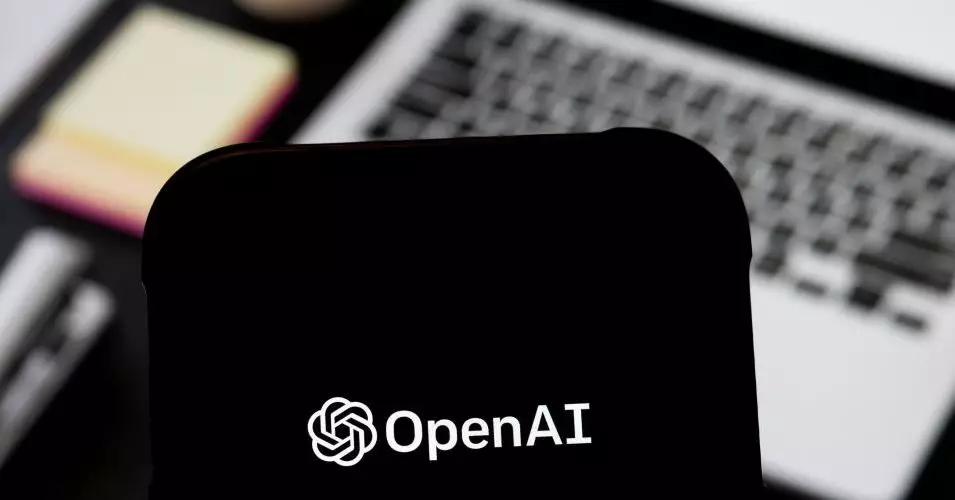The realm of artificial intelligence is on the brink of a significant transformation, led by OpenAI’s recent announcement of their impending release of an open-weight language model. As voiced by CEO Sam Altman, this ambitious initiative, set to launch shortly, marks a critical shift for the company, reflecting both an adaptation to competitive pressures and a philosophical evolution regarding the accessibility of AI technologies. The move comes against the backdrop of rival successes, particularly the impressive R1 model from the Chinese firm DeepSeek, which has set a high bar in terms of both performance and cost efficiency.
The Catalyst for Change
OpenAI’s announcement can be seen as a direct response to the current landscape of AI technology. The emergence of powerful open-weight models like the R1 has disrupted the industry, illuminating a path that OpenAI has previously eschewed. Altman’s candid reflection on being “on the wrong side of history” underscores a fundamental realization—the necessity for OpenAI to engage with the open-source ethos that many in the field are beginning to embrace. This commitment not only broadens the democratization of AI but also invites increased scrutiny into how such models are trained and deployed.
The proclamation that OpenAI is preparing to release a model that allows developers to run powerful AI on their own hardware represents a substantial shift from a previously quasi-closed ecosystem to one where collaboration and community-driven innovation can flourish. In contrast to traditional models that require access via a centralized platform, open-weight models encourage a distributed approach, potentially leading to enhanced creativity, experimentation, and tailored solutions for various industries.
Cost-Effectiveness and Customization
The financial implications of training AI models are crucial, especially given that OpenAI aims to demonstrate its capacity to develop models at lower costs. Reports indicate that DeepSeek trained their model at a fraction of what has conventionally been spent, propelling the competitive landscape and pressuring organizations like OpenAI to re-evaluate their spending and resource allocation.
Open-weight models not only promise cost reductions but also empower businesses to customize implementations, especially for sensitive applications. As verified by industry experts, the ability to adapt models to handle confidential information while curating privacy-sensitive applications is invaluable. This latitude allows organizations to fine-tune their AI systems for specific use cases—a crucial advantage in today’s data-driven environment.
Balancing Innovation with Responsibility
While the potential advantages are immense, they come hand-in-hand with significant ethical considerations. There is a contentious debate among AI researchers concerning the risks that arise from open-weight models. The potential misuse by malicious actors—ranging from cyberattacks to the creation of hazardous biological agents—is deeply concerning. OpenAI’s internal discussions around ensuring robust safety protocols highlight their commitment to responsible innovation. As articulated by Johannes Heidecke, the organization is prioritizing rigorous testing to minimize the risk associated with releasing open models, demonstrating a proactive approach toward mitigating potential threats.
The challenge lies in balancing the benefits of open access with the imperative to protect society from the misuse of powerful tools. OpenAI’s Preparedness Framework aims to navigate this delicate terrain, suggesting that the company is not merely jumping on a bandwagon but is keenly aware of its societal obligations.
Embracing Openness in AI Development
OpenAI’s imminent move to engage with open-weight model development reflects a broader shift within the AI community. As companies like Meta initiate their open-source journeys, the anticipated results could redefine industry standards. However, the success of these models hinges on a commitment to transparency—ensuring that information regarding training data and methodologies is as accessible as the models themselves.
Despite the promise of inspiring greater innovation and collaboration, OpenAI’s approach will require constant vigilance to maintain ethical integrity. Meeting this challenge will be paramount as we navigate an increasingly complex landscape of AI technologies, where the line between beneficial advancements and ethical responsibilities becomes ever more crucial.
In creating this new paradigm, OpenAI is not just releasing a product; it is attempting to reshape how we conceive of, engage with, and deploy artificial intelligence in ways that prioritize both ingenuity and caution. The ripple effects of this decision could forever alter the trajectory of AI.

